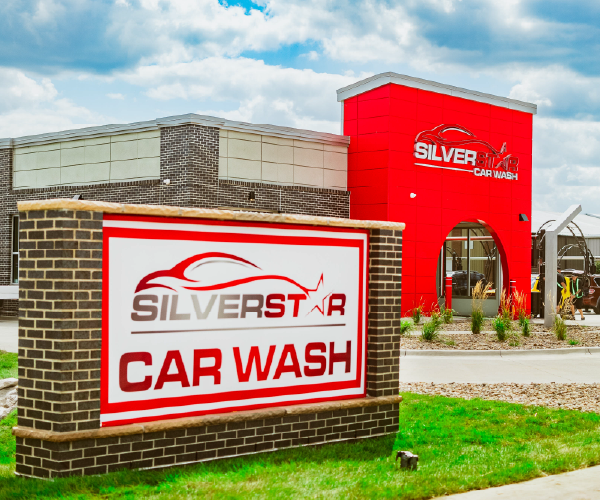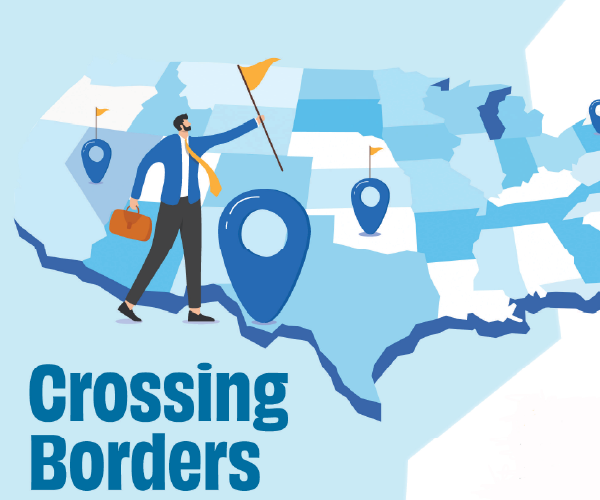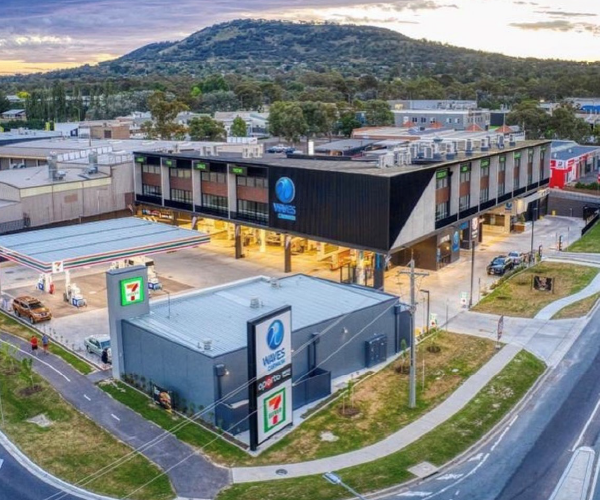
Self-Driving Cars Heading Your Way: Look Out!
January 1, 2014
7 minute ReadIn a few years, dirty cars may be driving themselves to the car wash — and their owners may not even need to go along for the ride.
Automobile companies and technologists are predicting that the first consumer-owned self-driving cars will be peeling out of dealership lots in as little as three years. The Institute for Electrical and Electronics Engineers, which has members in more than 160 countries, forecast in 2012 that by 2040, self-driving cars will account for as much as 75 percent of all cars on the road.
Car wash owners will no doubt welcome one futurist’s prognostication that self-driving cars will bring more business to the car wash industry.
“Ultimately, I see us transitioning to large fleets of on-demand self-driving cars and individual ownership plummeting,” said Simon Anderson, founder and chief futurist at Futur1st.com and near-futurist at Venture Foresight in Tallahassee, Fla. “These cars will be on the road 18-plus hours — instead of sitting parked 22 hours each day — and will get dirty faster and require frequent washing . … Overall, I think a much higher percentage of vehicles will be regularly washed than is the case today.”
The introduction of self-driving cars to the transportation landscape will affect a range of industries from trucking to tourism. Car wash companies and other businesses whose success revolves around the automobile will need to gear up for this fast-approaching technological revolution.
COMPUTERS ON WHEELS
The technology that makes autonomous cars possible is a sophisticated set of communication systems. Lasers, radars and cameras enable the cars to sense other objects around them and how fast those objects are moving. The driving function is controlled by computer algorithms that interpret the data those sensors receive.
Audi, Google, GM, Mercedes-Benz, Nissan and Volvo are among the companies who have entered the race to get the first self-driving cars ready for consumers. Sweden’s Volvo Car Group aims to have its version for sale by 2017. This year, 100 self-driving Volvo cars will take to the streets of Gothenburg, Sweden, in what the car maker calls “the world’s first large-scale autonomous driving pilot project.” In November 2013, Nissan conducted the first public road test of its Autonomous Drive system in Japan.
Google has conducted tests on dozens of vehicles embedded with its self-driving technology. One test run, seen on television and YouTube, features the director of the Santa Clara Valley Blind Center — who is himself blind — behind the wheel. Only after viewers watch him travel effortlessly to pick up his dry cleaning and grab some tacos at a drive-through restaurant is his condition revealed.
Watch the video of Google’s test drive with Steve Mahan, director of the Santa Clara Valley Blind Center, by searching for “Self-Driving Car Test: Steve Mahan” at www.youtube.com.
Four states — Nevada, Florida, California and Michigan — now have laws recognizing autonomous cars and mandating regulations for their safety, testing and performance. Michigan became the newest member of the group when its governor signed a bill right before making an announcement at the North American International Auto Show in January 2014.
The University of Michigan in Ann Arbor is planning to build a $6.5 million, 30-acre driverless car testing facility near the university’s North Campus. Designed to simulate a bustling cityscape, the facility will allow researchers to study how self-driving cars will perform in urban settings.
REVAMPING THE CAR WASH
The arrival of self-driving cars is certain to bring some changes to the way car wash services operate. Anderson envisions computer systems at car wash locations connecting to the vehicles and guiding them through the cleaning cycle.
Sherman Williams, president and CEO of Octopus Car Wash in Plant City, Fla., isn’t quite ready to wrap his head around the notion of a car showing up to be washed without a human in the driver’s seat. He’s seen enough problems with some of the automation features cars already have on board. Take, for instance, cars that will start at the press of a button — as long as the key fob is nearby.
“If the customer comes in and takes the key fob away — well, now the car’s dead,” Williams said.
Another glitch can occur at full-service car washes when a car automatically shifts to park as soon as it’s placed on the conveyor. That’s less of an issue with the newer express and flex serve washing systems.
“If you put a car on the conveyor and the customer is in it, he probably can flick a switch or tap a button, and then it would be OK,” Williams said.
Chuck Howard, president and CEO of Autobell Car Wash, Inc. in Charlotte, N.C., sees no reason why a car that can drive itself shouldn’t be able to figure out when it needs a bath.
“If a car can be self-driving, why not self-cleaning, in a sense?” Howard wondered. “The car might have sensors to detect the need for a wash and be programmed to drive itself to its preferred car wash.”
Howard also imagines that car wash companies would be able to access a prepaid account for each robo car.
“We might even have special deals for driverless cars, as the processing and execution of the wash could potentially be more efficient,” Howard said. “The car would be completely focused on the task at hand without distractions. For example, it wouldn’t be talking on a cell phone while we are trying to process it.”
As long as self-driving technology is developed for standard cars rather than custom-built vehicles, Howard thinks the equipment and operational adjustments for car wash companies won’t be overwhelming.
“Some accommodation might have to be made for antennas or external guidance devices,” Howard said. “Our industry should remind the developers to make their creations car wash-friendly.
Spaces now used as waiting areas for car wash customers may wind up being repurposed, according to Brad Templeton, a consultant on Google’s self-driving car project. With cars able to take themselves to and from the car wash, there won’t be a need for a room where their owners sit around sipping coffee and checking their office messages, said Templeton, a software architect who chairs the Computing and Networks Department at Singularity University in Moffett Field, Calif.
IMPACT ON OTHER INDUSTRIES
Transportation-related industries are bound to experience the biggest changes when self-driven vehicles become widely used.
The cost of delivering packages will decrease, Templeton predicted, since a fully robotic delivery device won’t require expensive safety features for protecting humans.
“You can’t kill your cargo, so you don’t need to have all of the things that modern cars have — all of the crumple zones, safety systems and all that stuff,” Templeton said. “You might see vehicles that are not much more than a suitcase on wheels.”
On other hand, Anderson isn’t looking for truck drivers to be displaced immediately.
“Delivery drivers may have a few more years of employment because the packages still need to get to the door somehow,” Anderson said. “While they may not be doing the driving, they will still be in the vehicle until robotics or 3D printing can sufficiently displace them.”
Grocery delivery services might see a jump once orders can be ferried around without drivers.
“For non-perishables, deliveries could be scheduled along with taxi services,” Anderson observed.
Designers expect vehicle-to-vehicle communication enabled in self-driving cars will lead to a dramatic reduction in traffic accidents, which Anderson said may leave a lot of auto repair shops scrambling for customers.
A decline in individual ownership will mean slower business for car manufacturers and dealerships, according to Anderson’s vision. The same will be true for gasoline and tire service businesses, he said. But Anderson sees a potential boon for another, seemingly unrelated line of work.
“The construction industry will be positively impacted, at least initially, as many parking garages and parking lots around the country are repurposed as stores, restaurants, parks and for many other better uses than a place for cars to sit,” he said.
Tourism is likely to get a boost if self-driving cars catch on. With no driving required, road trips will become a lot more appealing, Anderson said.
In January at the International Computer Electronics Show in Las Vegas, French robotics company Induct made the U.S. launch of its autonomous Navia Shuttle. Holding up to eight passengers, the Navia is targeted for use at airports, college campuses, sports arenas and other public venues.
Even if the developers of self-driving cars are promising their widespread availability is just around the corner, Anderson said the fact that only a handful of states have even moved forward with testing the vehicles suggests a gradual adaptation process.
Along with anticipating what self-driving cars might mean for his business, Howard has been thinking it might be kind of cool to take one for a spin.
“I think that would be fun and would allow you to make more efficient use of time, but I would want assurances that the manual override controls were working and accessible,” Howard said, echoing some of Williams’ trepidations about totally autonomous autos.
But even with those concerns, Williams says he’s ready to roll with whatever change is coming — however wary he may be about drivers disappearing from his car wash sites.
“Time marches on, and so does technology,” Williams said. “You’ve got to keep abreast of what’s going on. If it’s meant to be, it will happen, and we’ll have to adapt to it.”
The self-driving technology used in Sweden’s Volvo Car Group’s pilot “Drive Me – Self-driving cars for sustainable mobility” allows passengers to hand over the driving to the car when the circumstances are appropriate. Photo copyright Volvo Car Group.
Navia is an innovative mobility solution: a robotic driverless electric vehicle carrying up to eight passengers.







